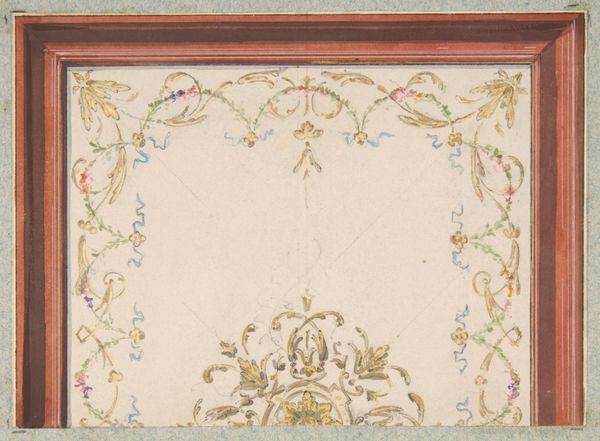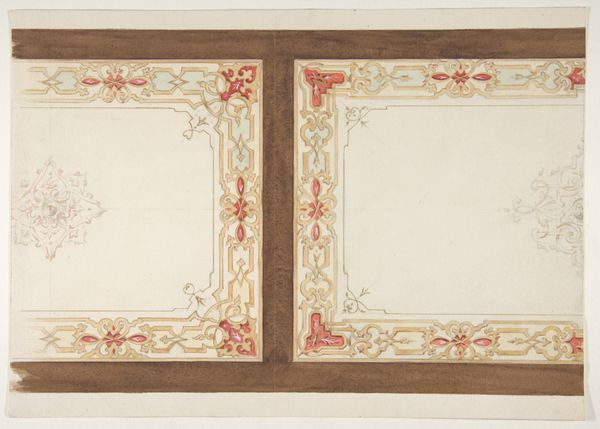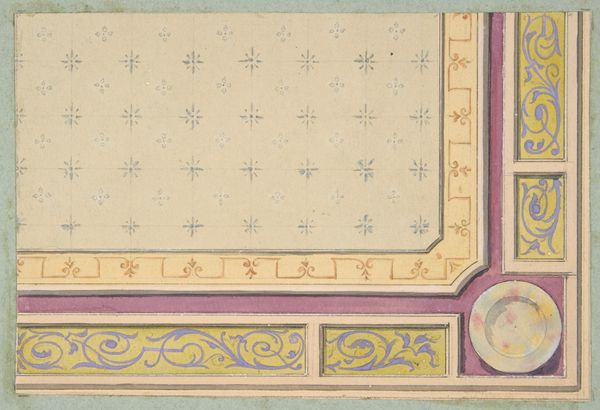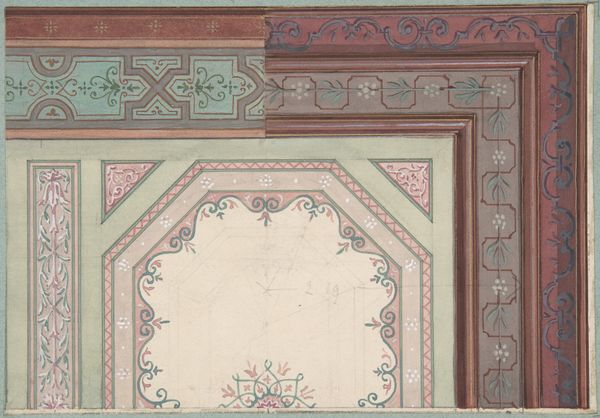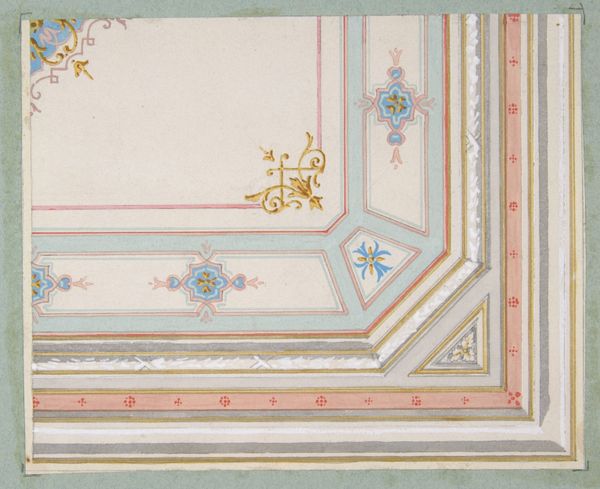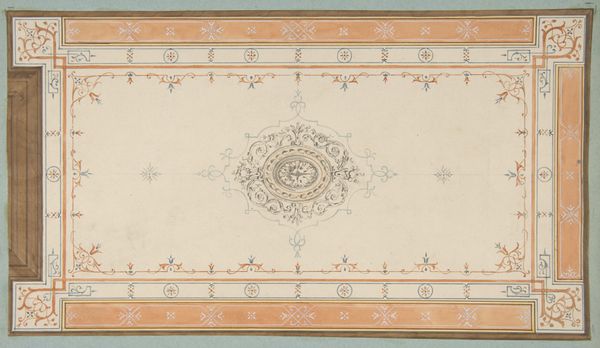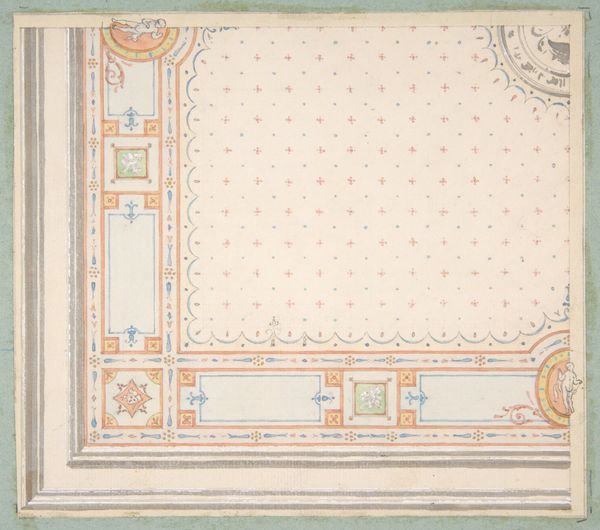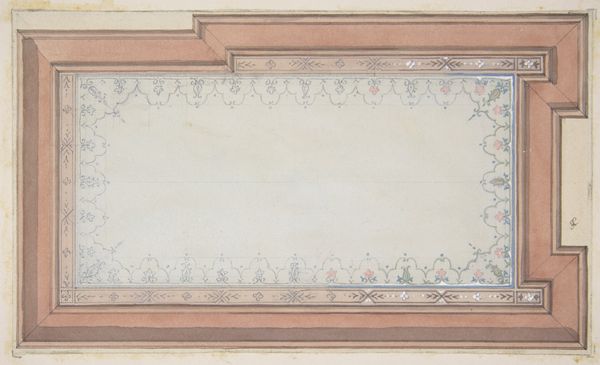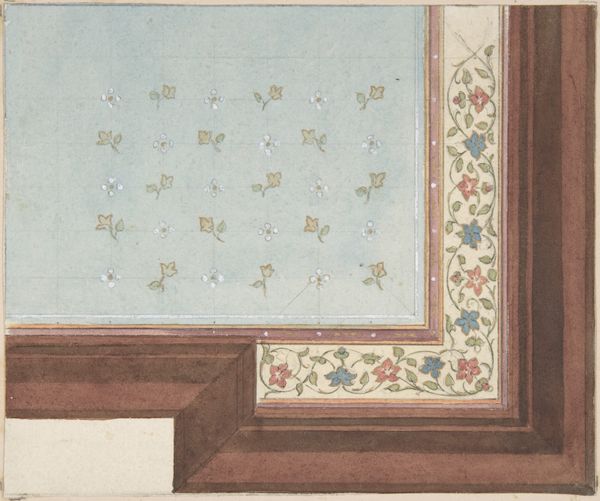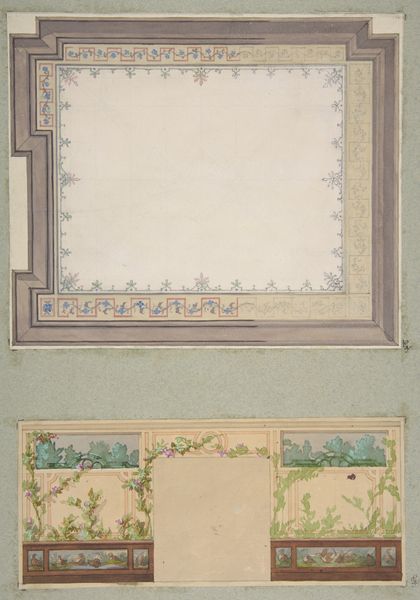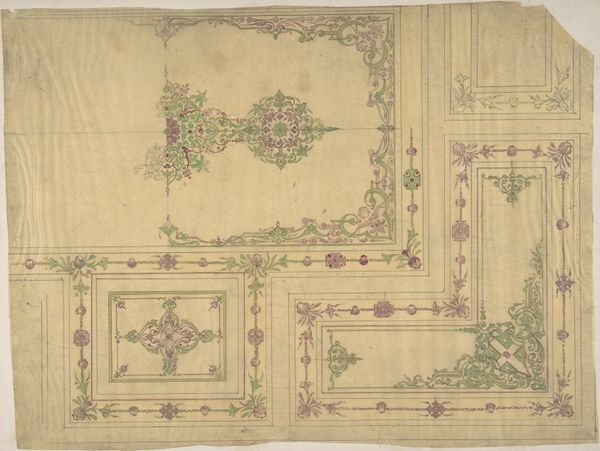
Ceiling Design for Madame Hope's Bedroom 1862 - 1872
0:00
0:00
Dimensions: sheet: 7 1/4 x 8 1/8 in. (18.4 x 20.6 cm)
Copyright: Public Domain
Curator: Let’s turn our attention to this watercolor and print work titled “Ceiling Design for Madame Hope’s Bedroom,” created between 1862 and 1872 by Jules-Edmond-Charles Lachaise. What are your initial thoughts? Editor: My first impression is that it's incomplete; there's so much negative space in the center. However, the details are incredible! Look at that corner work; I wonder if they used stencils for these repeating patterns. Curator: Possibly. It has a Rococo feel, doesn’t it? These designs can reveal a lot about the client’s aspirations and cultural understanding of beauty, luxury, even dreams for the domestic sphere. Madame Hope was clearly seeking to be enveloped by elegance and sophistication, as exemplified in the geometric patterning and use of gold hues. Editor: Elegance perhaps, but also consider the labor involved. These fine lines and delicate washes – likely created by specialized artisans. It speaks to a whole social structure surrounding its creation. What kind of pigments did Lachaise and his team have access to? How would the application of water colors enhance the aesthetic appeal of the ceiling, drawing viewers into the experience of consumption and luxurious display? Curator: That's a vital perspective. Looking closer, the decorative patterns hold a certain visual language. The repeated motifs create a rhythmic quality which often evokes security and order—comforting considerations for one's bedchamber. This order offers a sense of protection. Editor: Protection, or perhaps confinement? This highly stylized world of gilded cages… Madame Hope's “dreams” might well be symptomatic of social forces more broadly – anxieties over wealth, status and the changing nature of labour. I wonder, for example, what were the conditions in which the craftspeople labored in their creation, did the piece ever get completed, and would that ceiling be well maintained over time. These things seem important for interpretation, too. Curator: A good point. The preservation of materials informs meaning over time, too, doesn't it? Even in its unfinished state, it communicates much. Editor: Absolutely. These sorts of prints allow us to peek into not just aesthetic tastes, but also into a moment in a complex history of production.
Comments
No comments
Be the first to comment and join the conversation on the ultimate creative platform.

